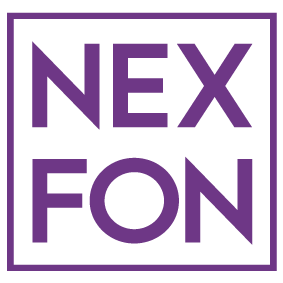Technology is constantly evolving, and even if you upgrade your organization’s communication system, you may still come across terms that are vague to you. These days, UCaaS telephone systems, or unified communications as a service that combines the benefits and features of voice, video and text calling, have facilitated enterprise communications. In this article, we try to introduce you to common UCaaS terms you need to know to better understand the services.
As the name implies, UCaaS is an enterprise communication service that allows connection through a single platform. The purpose of this service is to smooth, improve and ensure efficient connection inside and outside the organization. This platform is very popular among businesses that are growing constantly.
Importance of UCaaS
The most important thing for a business is the cost of services used for daily tasks. Because UCaaS is based on cloud, it is cost-effective and has become a desirable choice for any organization to reduce cost of hiring employees and purchasing equipment.
In addition, many businesses believe that unified communications enable them to respond faster, so companies are planning to invest in the UCaaS service. UCaaS helps call centers and customer-centric businesses improve their communication process using instant VoIP service.
Unlike traditional telephones, UCaaS takes the installation and maintenance process outside of the organization, reducing service installation and commissioning time. In addition, the high flexibility of this cloud service is a good choice for developing businesses, and the number of extensions and multiple features can be easily changed by changing the size of the organization.
Why do businesses use UCaaS?
With the advancement of technology and cloud services, traditional telephones have been replaced by cloud telephones. With almost every tool on the Internet, businesses are increasingly relying on cloud services. This trust and popularity are largely due to the scalable and flexible nature of UCaaS, which attracts businesses and simplifies their communication process. Apart from convenience, this service can also be combined with various other techniques and tools to provide an integrated solution. Some of the features and facilities that businesses need is:
- Transfer and share files
- Compatible with iOS and Android operation systems
- Online fax
- Hold music
- Monitor and control calls
- Reporting system
- Easy integration with other operating systems
- Call recording
- Audio mailbox
- IVR
- Etc.
Common terms in the UCaaS
If you are planning to use UCaaS in your business, it is better to understand its common terms, some of which are introduced below.
1. VoIP
Voice over Internet Protocol (VoIP) facilitates voice calling. What sets it apart from traditional call systems is that it uses a broadband Internet connection and does not require physical telephone lines.
VoIP offers a lot of flexibility because you can connect to any device (not just the phone) over the web. In addition, the technology enables organizations to make remote group calls. With access to call recording, voicemail, and etc., a company can measure the performance of its business using the VoIP system.
2. PBX
PBX stands for Private Branch Exchange, a business enterprise communication system that directs calls and enables switching of various departments within organizations. PBX is a telephone system that allows organizations to answer and transmit calls remotely. You can dial and make calls from your desktop, laptop or mobile device. Integrated communications use the PBX telephone system for voice and call recording purposes.
3. Comparison of UC with UCaaS
UC is not different from UCaaS and both are different abbreviations for the same thing. UCaaS is an “integrated communication as a service” solution that combines audio, text, and video into a portal or software that organizations can use.
4. SLA (Service Level Agreement)
When you select a provider to supply goods or services, it concludes an agreement in the contract that guarantees to provide you with services of a certain standard or quality. This agreement usually exists between the customer and the service provider, but can also be between two businesses and act as a contract and guarantee between the two parties.
5. BYOD
BYOD, or Bring Your Device, is a policy that allows employees to bring their device to work. Although there may be issues such as security concerns, data compromises, reduced productivity, etc., integrated communications allow you to resolve them easily.
Using internal direct dialing (DID), the employee’s personal number is routed to the phone number of your choice. In case of outgoing call, the employee’s internal number is displayed to the caller.
6. QoS (Quality of Service)
Service quality is a common term among industries. Here, the term refers to technology that ensures the credibility and reliability of users to run smooth UCaaS traffic over the network. This combination of technologies ensures that bandwidth usage is properly managed and that data flows efficiently over the Internet.
The main goal of QoS technology is to protect the data at the highest priority. Classification and queuing are two common QoS tools.
7. DID (Direct Inward Dialing)
DID or ” Direct Inward Dialing” is a service that comes with the cloud phone system and is provided by telecommunications companies. With a DID number, callers connect directly to their desired extension instead of queuing.
Basically, the function of the DID number is to direct incoming calls to business lines. Companies typically use the DID number to identify the caller in outgoing calls. With this service, any number of calls is distributed between different business lines. Therefore, when a customer calls a DID number, all devices connected to that number will ring.
8. Cloud computing
Cloud computing is a term used to describe services over the Internet. From servers to storage and databases, everything is managed online. This method is a flexible and reliable platform for organizations activities.
Since everything is virtual, you just have to pay for the services used and thus reduce the costs significantly. Cloud computing makes business operations efficient and ensures business scalability.
9. Softphone
Softphones work just like desktop phones, but through a computer system. With features like dialing pad, mute, call transfer, etc., the software phone works just like a traditional phone. You can call this phone through the UCaaS port. It also helps businesses reduce their call costs, unlike traditional telephone systems, which require hardware and a series of telephone lines. Software phones also allow you to monitor and record calls.
10. Unified Messaging (UM)
Unified messaging is a set of all communication services including voicemail, video messaging, text messaging and so on. This feature allows the user to send messages through any devices and remove the limitations of a system.
UM is often called an integrated inbox because all emails, faxes, text messages, and voicemails are received and managed by a single email. This feature simplifies the work of call center representatives because they do not need to examine each platform separately for the message, and all messages can be viewed and responded to collectively on a single platform.
With the introduction of the Pro solution, Nexfon has provided integrated cloud services for businesses. The Nexfon cloud phone system allows you to manage your corporate calls on any device connected to the Internet. Also, due to its high scalability, you can allocate extensions based on your number of employees and without the need to purchase equipment and servers you can use the various features of an integrated cloud service such as online fax, in-house chat, IVR, call queue, voicemail and etc.
For more information, please fill out free consultation form so that we can contact you.




